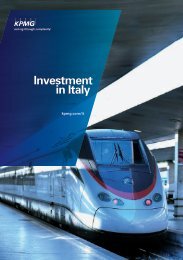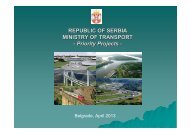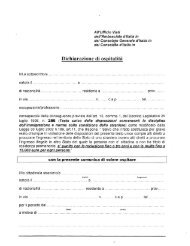Innovation Canada: A Call to Action
Innovation Canada: A Call to Action
Innovation Canada: A Call to Action
You also want an ePaper? Increase the reach of your titles
YUMPU automatically turns print PDFs into web optimized ePapers that Google loves.
Program EffectivenessChapterProgram Effectiveness5This chapter addresses the first question inthe government’s charge <strong>to</strong> the Panel:“What federal initiatives are most effective inincreasing business research and development(R&D) and facilitating commercially relevantR&D partnerships?”While the Panel determined that <strong>Canada</strong> isconsidered <strong>to</strong> be among the leaders in programassessment, 1 it was concerned <strong>to</strong> learn, in thecourse of briefings with federal officials, thatthe <strong>to</strong>ols are not in place <strong>to</strong> undertakecomparative assessments as contemplated inthis question. In the federal framework forprogram evaluation, “effectiveness” is definedby the Treasury Board of <strong>Canada</strong> Secretariat(2009) as “the extent <strong>to</strong> which a program isachieving expected outcomes.” There is nocommon evaluation framework in place <strong>to</strong>determine relative program effectiveness acrossdepartmental lines. As a result, standardizedperformance and outcome indica<strong>to</strong>rs do notexist for the roughly $5 billion of businessinnovation programs in the review, and thesupporting information is not retained in acommon form or database.This changes the nature of the advice that thePanel is able <strong>to</strong> offer. Instead of assessing therelative effectiveness of the 60 programsdescribed in Chapter 3, the Panel is makingrecommendations that respond <strong>to</strong> stakeholderissues and concerns and that, if implemented,will establish the missing framework needed <strong>to</strong>shape a comprehensive and consistentevaluation of R&D program effectivenessgoing forward.To establish a context for the Panel’srecommendations, the following sectionssummarize (i) the relevant evaluation machineryalready in place in the federal government,(ii) some international experience in respect ofthe evaluation and comparative assessmen<strong>to</strong>f programs that support business innovationand (iii) what the Panel heard from stakeholdersregarding the effectiveness (and shortcomings)of innovation support programs in <strong>Canada</strong>.Existing AssessmentProcedures forFederal ProgramsThere are several mechanisms in place forassessing federal program expenditures,including audits by the Audi<strong>to</strong>r General,strategic reviews and ongoing programevaluations. Performance assessment has awell-defined role within the government’sexpenditure management system (EMS) —the overall framework for decision making onspending. In recent years, the EMS has evolved<strong>to</strong> put greater focus on results. The 2006Federal Accountability Act requires departmentsand agencies <strong>to</strong> review the relevance andeffectiveness of their grants and contributions1 More specifically, the net public benefit evaluation of the SR&ED tax credit by the Department of Finance in 2007 (Parsonsand Phillips 2007) is considered <strong>to</strong> be state-of-the-art for program assessments of its type.5-1
















